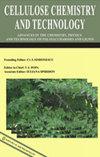硼砂-扇形芽纤维增强聚合物复合材料的力学性能研究
IF 1.1
4区 农林科学
Q2 MATERIALS SCIENCE, PAPER & WOOD
Cellulose Chemistry and Technology
Pub Date : 2023-07-20
DOI:10.35812/cellulosechemtechnol.2023.57.58
引用次数: 0
摘要
天然纤维已经被广泛使用了几十年。本文研究了一类新型纤维Borasus扇形芽纤维作为聚合物基复合材料增强材料的适用性。扇状的硼砂芽也称为棕榈芽。通过水脱胶法提取纤维,并用5%氢氧化钠(NaOH)处理以去除纤维中存在的杂质,从而实现与基体的更好结合。研究了生的和碱处理的硼苏芽纤维的扫描电子显微镜图像。通过手工叠层技术和压缩成型技术,在聚酯基体中分别用20、25、30和35体积%的处理过的和未处理过的棕榈芽纤维制成复合材料试样。测定了试样的拉伸强度、弯曲强度、压缩强度、冲击强度、硬度和吸水率。实验结果表明,以35体积%处理过的棕榈芽纤维为增强材料的复合材料试样在各方面都表现得更好。与用35%未经处理的棕榈芽纤维增强的复合板相比,它们的拉伸强度高30.34%,弯曲强度高34.47%,压缩强度高3.14%,冲击强度高15.56%,吸水率低7.6%。因此,复合材料显示出足够的机械性能,可用于特定应用。本文章由计算机程序翻译,如有差异,请以英文原文为准。
INVESTIGATION OF MECHANICAL PERFORMANCE OF BORASSUS FLABELLIFER SPROUT FIBER REINFORCED POLYMER COMPOSITES
Natural fibers have been extensively used for many decades. This work investigates the suitability of Borassus flabellifer sprout fiber, a new class of fibers, as reinforcement in polymer matrix composites. Borassus flabellifer sprouts are also called palm sprouts. The fibers were extracted by the water retting method and treated with 5% sodium hydroxide (NaOH) to remove the impurities present in the fiber to achieve better bonding with the matrix. Scanning electron microscopic images of raw and alkali treated Borassus sprout fibers were studied. Composite specimens were made with 20, 25, 30 and 35 volume % of treated and untreated palm sprout fibers, respectively, in a polyester matrix by the hand layup technique and by the compression molding technique. Tensile strength, flexural strength, compression strength, impact strength, hardness and water absorption of sample specimens were determined. Experimental results showed that the composite specimens with 35 volume % of treated palm sprout fibers as reinforcement performed better in all aspects. They have 30.34% higher tensile strength, 34.47% higher flexural strength, 3.14% increased compression strength and 15.56% better impact strength and 7.6% less water absorption than the composite plates reinforced with 35% untreated palm sprout fibers. Thus, the composites showed adequate mechanical properties to be considered for specific applications.
求助全文
通过发布文献求助,成功后即可免费获取论文全文。
去求助
来源期刊

Cellulose Chemistry and Technology
工程技术-材料科学:纸与木材
CiteScore
2.30
自引率
23.10%
发文量
81
审稿时长
7.3 months
期刊介绍:
Cellulose Chemistry and Technology covers the study and exploitation of the industrial applications of carbohydrate polymers in areas such as food, textiles, paper, wood, adhesives, pharmaceuticals, oil field applications and industrial chemistry.
Topics include:
• studies of structure and properties
• biological and industrial development
• analytical methods
• chemical and microbiological modifications
• interactions with other materials
 求助内容:
求助内容: 应助结果提醒方式:
应助结果提醒方式:


